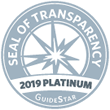SUMMARY OF THE STUDY
The investigators performed a phase II international multicenter study of Spartalizumab in 42 patients with locally advanced or metastatic anaplastic thyroid cancer. Of these patients, 60% had prior cancer drug treatment, 71% had prior radiation treatment, and 67% had prior thyroid cancer surgery (thyroidectomy with or without removal of lymph nodes). Both the patients and their doctors were aware of the treatment given. The study was funded by the manufacturer of the drug, Novartis. There was no comparison group, so all of the patients received the drug under study. The drug was given intravenously every 4 weeks, but could be held or stopped if there was toxicity (serious side effects). The primary outcome was the overall response rate according to Response Evaluation Criteria in Solid Tumors (RECIST). The average duration of study treatment was 8 weeks, but ranged from about 2 to 114 weeks.
The overall response rate was 19%, which included 3/42 patients (7% of the entire study population) who had a complete response (disappearance of cancer lesions that were measured at the beginning of the study) and 5/42 patients (12%) of patients who had a partial response (some reduction in the amount of cancer seen on imaging, but some visible cancer on scans). Of the 40 patients whose cancers could be evaluated for PD-L1 expression, 28/40 (70%) expressed this marker at baseline. Further, only the patients whose cancers expressed PD-L1 (8/28, 29%) responded to the drug as none of the patients whose cancers did not express PD-L1 (0/12) responded. The overall survival rate was 5.9 months, with 40% of patients alive at one year. Adverse events were reported in 41/42 (98%) of patients and more serious adverse events were reported in 29/42 patients (69%).
WHAT ARE THE IMPLICATIONS OF THIS STUDY?
This study shows that a subset of patients with anaplastic thyroid cancer had a significant response to spartalizumab, particularly those patients whose cancers expressed PD-L1. Further, the treatment was generally well-tolerated by patients and the side effects were similar to those seen in other clinical trials of drugs in this class. This is exciting news for patients newly diagnosed with anaplastic thyroid cancer. It will be important to confirm these findings in other studies.
— Anna M. Sawka, MD, PhD



